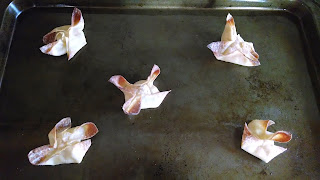Living in a staged home
Staging a
home to sellStaging a home to sell while living in it can feel exhausting; you want it to look nice for buyers that might pop by at any time, but you also don’t want to feel like you live in a museum where you can’t touch anything!

Declutter. Follow the rule of organization: If you haven't used it this year, GET RID OR IT. This also includes dated or damaged furniture you don't want in your new home. Be aware that prospective buyers will look everywhere, including in any built-in custom carpentry cupboards and shelves, pantries, and other areas you might think are off-limits. When it comes to personal spaces such as bedrooms and bathrooms, think about the items you would take on a two week vacation and
get rid of everything else. (Keep only daily toiletries, 2 weeks worth of clothes, etc.)
With more space cleared in your home, you can start thinking about how to stage it. Potential buyers want to imagine themselves in your home, so you want to keep the décor neutral, without a lot of personal touches. At the same time, you don’t want it so sterile that you feel uncomfortable, or that they have trouble imagining anything at all in the space. The first step is to make sure your home feels
light and open, because buyers put a premium on natural light.
Remove blinds and heavy curtains and consider investing in sheers and other lightweight window treatments, or leave windows uncovered if doing so won’t compromise privacy.
Make sure you have a few neutral items of furniture in your home; this is a good time to put dramatic statement pieces away unless they make fantastic accents in a room.
Float furnishings away from the wall to create more dynamic space, rather than shoving them against the walls, which can actually make rooms feel more crowded.
When it comes to accent decor, consider emptying open bookshelves and cupboards and placing only a few appropriate pieces in each; a small stack of china in a cupboard or 4 books and a bookend on the bookshelf. Choose a few
neutral, but interesting, pieces of art to hang, and offset them at different heights to draw attention to all the display possibilities. Also add mirrors; they add light, make rooms feel larger, and keep the space more interesting.
If you want to display some sculptures, keepsakes, and other objects, be aware that odd numbers on display tend to look best, and they shouldn't be rigidly grouped. Rather than a row of uniformly sized candles, for example, consider a cluster of five pillars of different heights. Pull accent items together with a common thread: an orange vase could go with a orange leather-bound book and bowl of fresh oranges, for example. This usable arrangement, vase of flowers, oranges you can eat and refill and a book you enjoy feels "real" to a buyer but is still neutral and sophisticated.
Many homes have underutilized areas like stair nooks, junk rooms, and basements. Consider staging these to add value; since you’re not using them anyway, it won’t be an inconvenience to keep them looking dressed up, and by occupying them, you’ll reduce the chance that they attract clutter. Add an armchair, a table, and a soft lamp to make a reading corner, or a yoga mat and some pillows to create an instant yoga studio. These little spots in your home can become hidden gems to entrance buyers, rather than awkward spaces.
Open the windows at least ten minutes a day for ventilation to keep the house smelling fresh, and make sure to keep fresh vases of flowers around because they can make your house much more inviting. If you have animals, clean up after them regularly.
Once you have done these things, consider asking critical friends for their opinion. Have them walk through and tell you what catches their eye, good or bad; they may spot issues like peeling paint that you don’t notice anymore, for example, or could have suggestions for re-positioning items to make rooms feel more open and friendly. When you feel like your home is close to ready, a
REALTOR can walk through with you to provide additional suggestions.
 Some people are really on their game and they thouroughly clean their grill before they store it away in the fall. Some people open it in the spring to find the whole previous summer's worth of "leftovers" to deal with. Either way, it needs to get cleaned at some time!
Some people are really on their game and they thouroughly clean their grill before they store it away in the fall. Some people open it in the spring to find the whole previous summer's worth of "leftovers" to deal with. Either way, it needs to get cleaned at some time!





